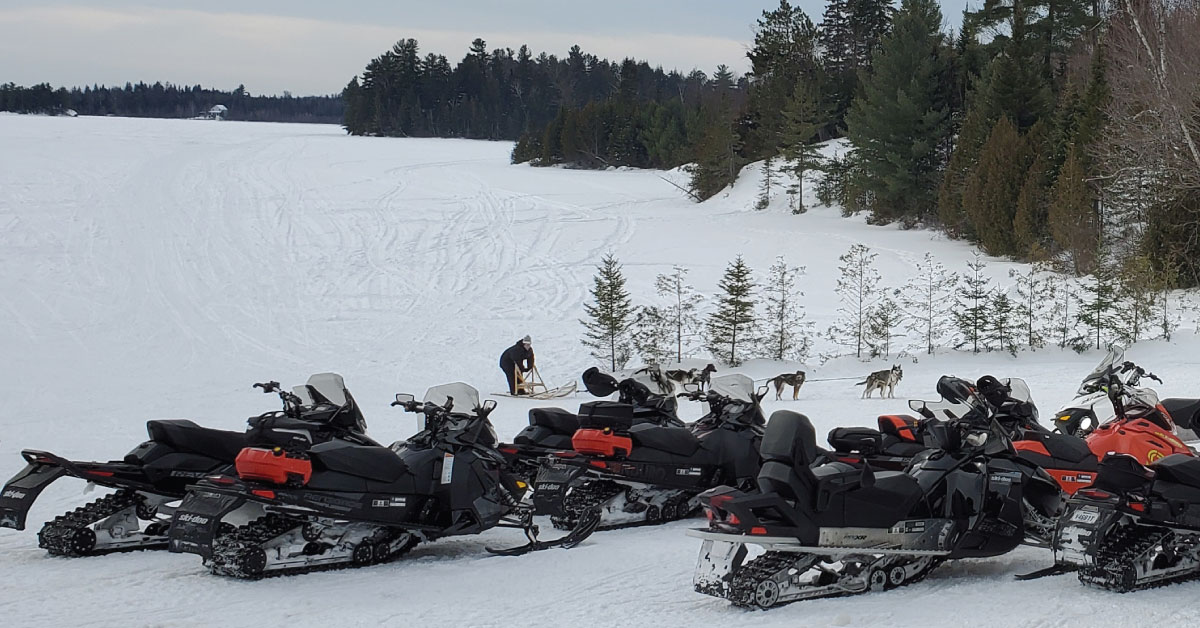
28 Jan The snowmobile and its dangers

The Lac St-Jean tragedy on Tuesday, January 21, reminds us all that snowmobiling, though enjoyable, still presents certain real dangers.
Here is a list of the main items to consider before taking off on snowmobile. Items that, unfortunately, most snowmobilers will neglect over time and with experience.
Avoid frostbite and other problems
First of all, always dress adequately for the weather and equipped to cope with all conditions, such as temperature changes, journey duration, trail conditions, etc.
Relying exclusively on snowmobile pit stops to warm up is not the best idea. You may arrive at your destination and be faced with a sign that says “closed”.
Avoid dangerous maneuvers
In snowmobiles, we must always respect speed limits and keep a safe distance between vehicles.
Keeping to the right at all times when driving is also the best way to avoid getting our skis tangled or have a face to face accident, especially in the curves.
Reflexes are not the same from one person to another so why tempt fate unnecessarily?
Avoid solo rides in remote areas
No one can predict mechanical breakdown, running out of gas or even an accident. It is easy to imagine the mess we might find ourselves if this happens to us on a trail with no traffic and nobody around to help us.
It is therefore essential to always disclose our itinerary to a third person, better still, always travel in twos, especially when traveling on more isolated trails.
Pay attention to big beasts
Those who have already experienced it know how disconcerting it is to see a deer jump in front of their snowmobile, which is why we must always be vigilant and keep our eyes open.
The lakes: safe or not?
Never should you cross an unmarked lake that has not been confirmed as safe by a competent authority. Why? Because there is no certainty that the lake is safe or not.
Here is some information on how a lake freezes:
- Freezing often starts on the edges, then spreads over the entire lake depending on the currents. For example, the frost is often thicker near the edges or, conversely, the ice may be more fragile if a stream flows into it nearby. Thus, it is fair to say that it is almost impossible to confirm with certainty that a lake is safe.
- Another point: It is necessary to wait several days of cold for a lake to freeze and the larger and deeper a lake, the longer it will take for the layers of ice to form.
- Also, be aware that the heat of the day can affect the ice. As a result, it may be much more fragile at the end of the day.
- The presence of snow on a lake can also lead to warming because snow acts as an insulator. Thus, ice covered with snow is generally thinner and more brittle than bare ice.
IF EVER THE UNTHINKABLE HAPPENS… In the event that the ice begins to break under your snowmobile, do not stop. The vehicle can ride on water for a certain distance if you keep up your speed. This can allow you, for example, to reach the shore or a safer layer of ice.
In closing, if you still want to cross a lake, here is a chart that explains the recommended ice thickness whether on foot, a snowmobile or in a vehicle. But beware, the ice can be very thick in one place and thinner in another.

Jackie Beaudoin, Leclerc Insurance and Financial Services
Sources (French only): WikiHow, Société de sauvetage



